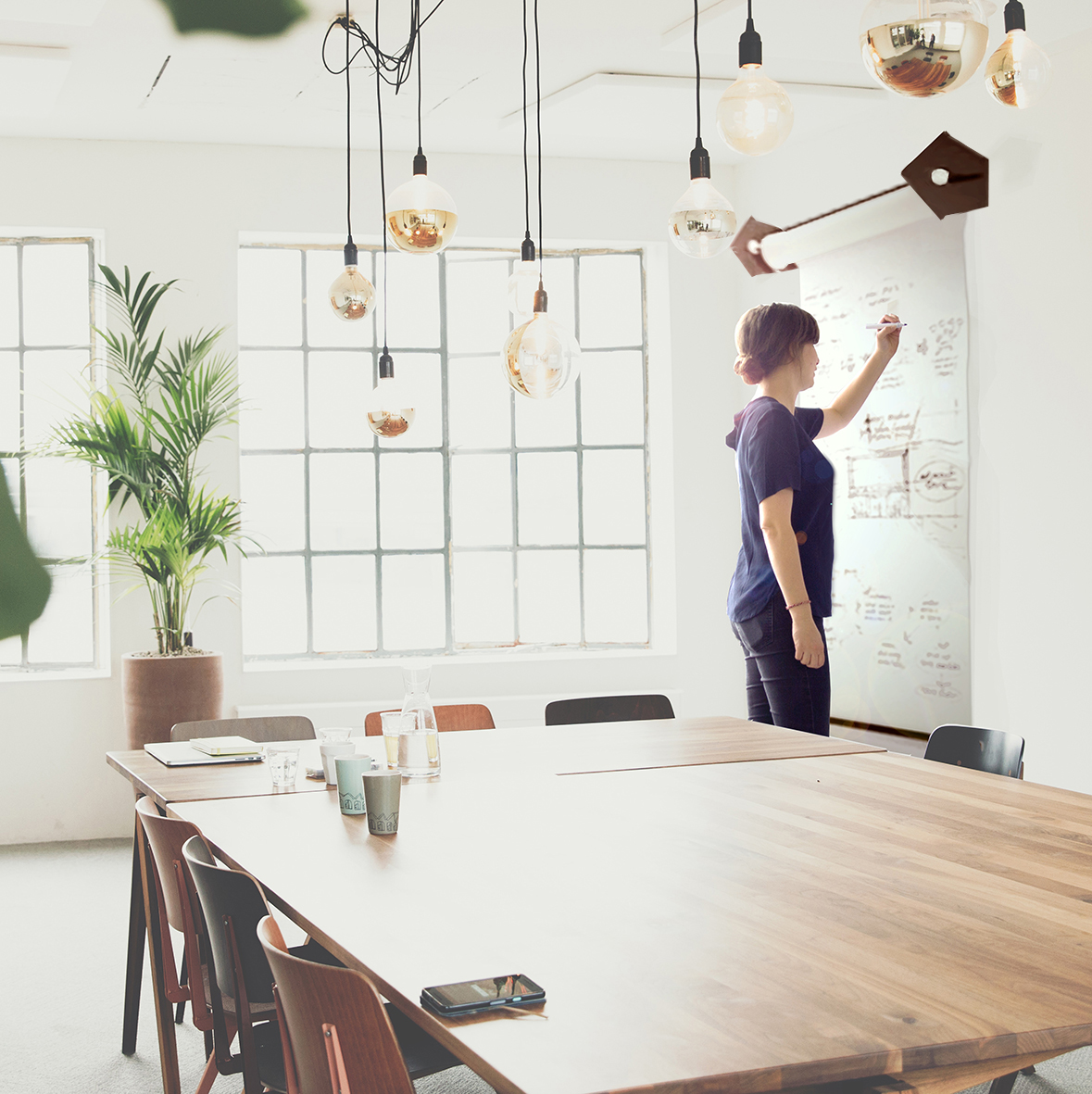Whilst you might be keen to incorporate sustainability in the workplace, knowing how to incorporate sustainability in the workplace is another matter. Where do you start?
Here are three top tips to think about when incorporating sustainability in the workplace.
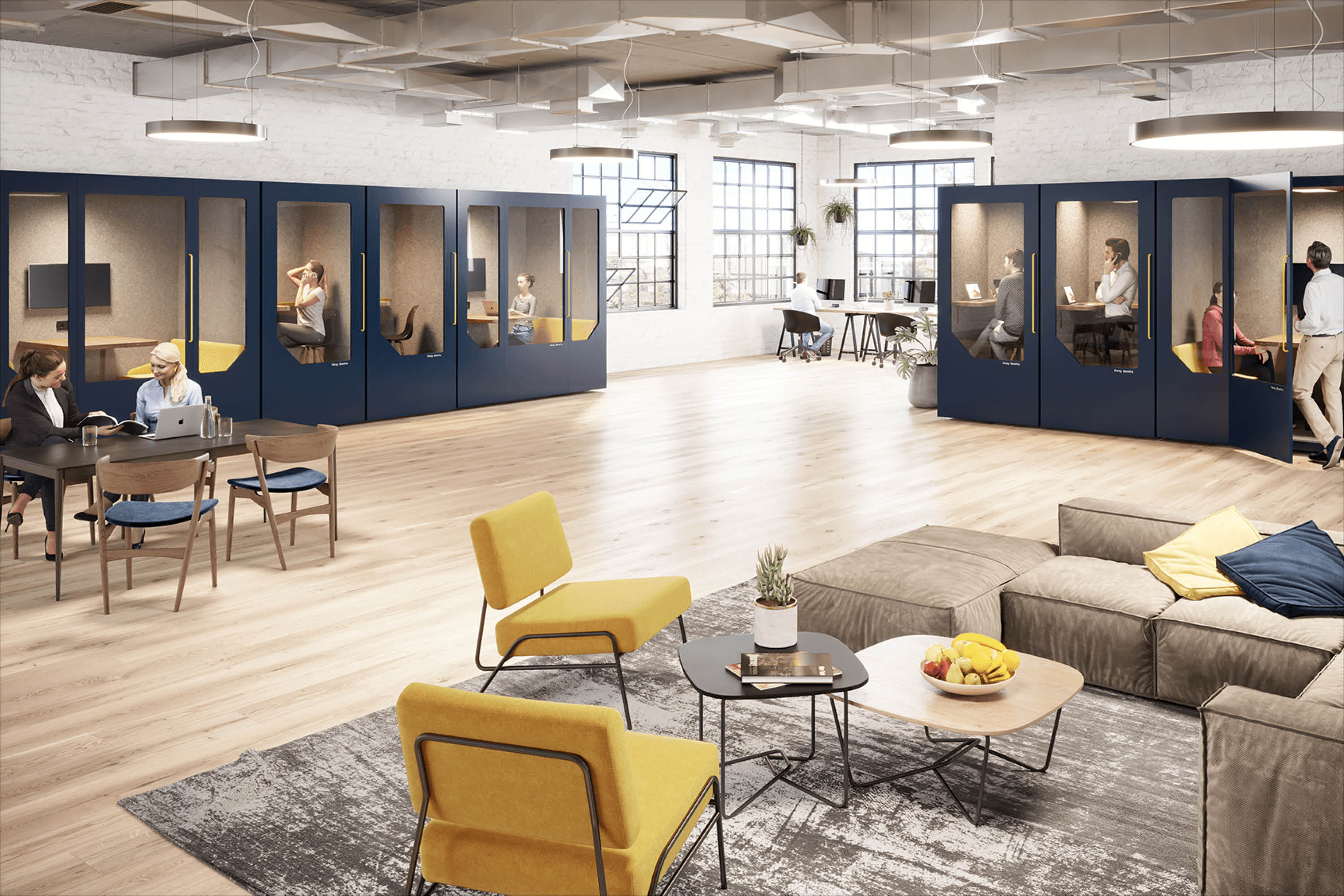
1. Keep as many of the current products and materials as you can.
The circular economy is about keeping materials that have already been created in use. If you have tables and chairs that are a little dated, can the chairs be reupholstered with padding and new fabric? Can the table have a new laminate overlaid, or if the table itself is has seen better days, can the frame still be used?
Many sustainability-focused interior designers will try to re-use products in another way if they can’t be used as they are. Old internal doors could be upcycled into boardroom tables or cut down to make side tables. If a new floor is being laid, you could use the scrap wood to make shelves, a coat stand, or wall signs. Many products are delivered on wooden pallets which are then left to waste, but with a little TLC these can be transformed into the base of an armchair, sofa or even a coffee table.
Sustainability literally means ‘the ability to be maintained at a certain rate or level’. If you can reuse an existing product then you are sustaining its lifespan, prolonging its use, and keeping it out of landfill. This is the first step to incorporating sustainability in the workplace.
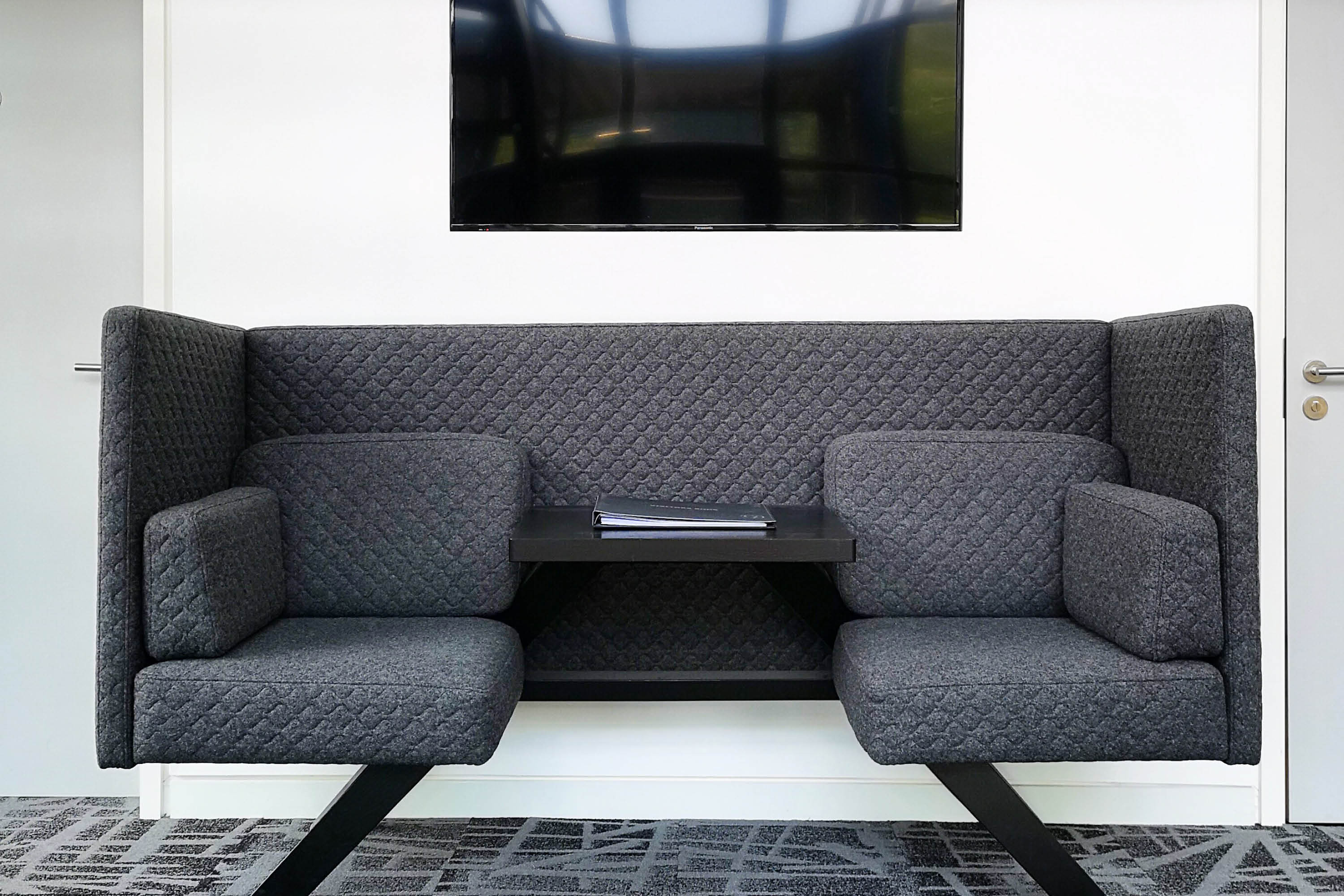
2. Use environmentally friendly products.
As a consumer, we all make decisions every day on the types of businesses we support. If we buy from a certain manufacturer that knowingly uses cheap materials, then the product isn’t likely to last. As the saying goes, “buy cheap, buy twice”. However, if you invest in durable, quality items with expert craftsmanship, then you’re providing a sustainable option because it won’t need to be replaced, hopefully for many years.
When it comes to the materials themselves, look at natural materials rather than synthetic ones. Fabrics like cotton, wool and hemp are all sturdy yet found in nature. For harder surfaces consider stone, bamboo, and always FSC-certified wood. Natural dyes are preferable too, to reduce excess chemicals being breathed in by occupiers. You can also incorporate sustainability in the workplace by using local suppliers where possible, to minimise the project’s carbon footprint. If you choose to use synthetic materials, then go for recycled materials. Old fishing nets and recycled plastic bottles can now be transformed into a fabric almost softer than cotton.
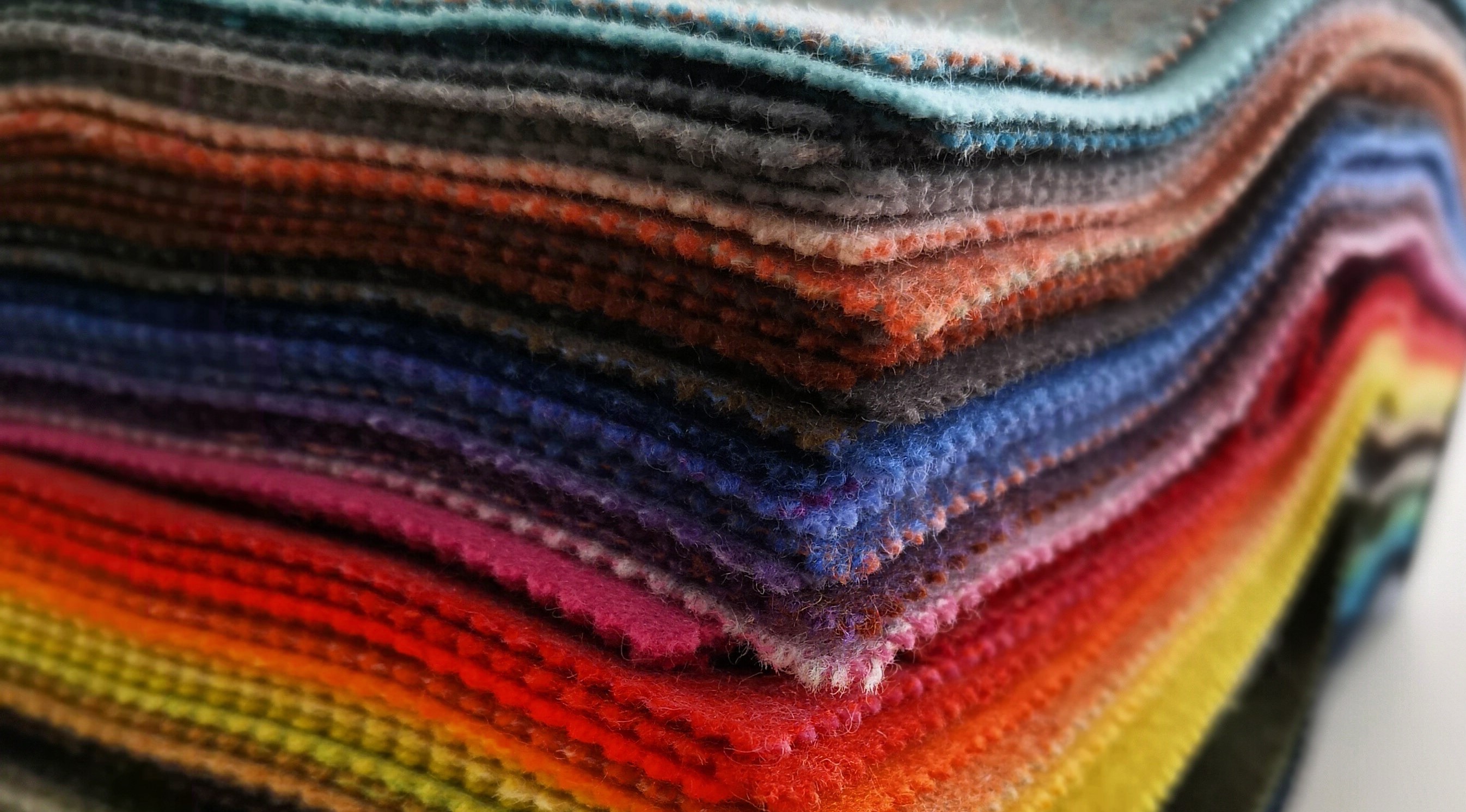
3. Buy new - but buy better.
If you have to buy a new product, then choose something that has been made from waste materials.
Consider researching ecological brands that benefit the environment. For example, there’s a paint that absorbs CO2 from the air; the factory is powered by renewable energy; and it’s certified Cradle to Cradle. There’s also a company that creates beautiful tiles made from at least 98% recycled materials such as glass and porcelain.
Even better, you can find sustainably made products right here at Agilita. Persy ONE may look like a standard phone booth, this single-person booth uses acoustic PET made from 800 recycled plastic bottles. What’s more 90% of its core components are locally sourced, and for every booth sold, 10 trees get planted in the Amazon rainforest. Your client gets a beautiful brand ‘new’ product, but you’re still implementing sustainability in the workplace through carefully considered, sustainability-focused suppliers.

With Studio Vix, they’ve purposefully developed their products according to the circular design principles. This means that each product has been designed to maximise lifetime usage, minimise waste, and ensure that materials can be re-used again and again. Where more than one material is used, they are easy to separate and replace. Their sustainable furniture uses materials such as steel, glass enamel, FSC paper/wood and recycled textiles which are locally sourced. Studio Vix products are also designed in a way that means they require minimal space when being transported, which again helps reduce their overall carbon footprint. All parts of their products are easily replaceable to extend the item’s lifecycle.
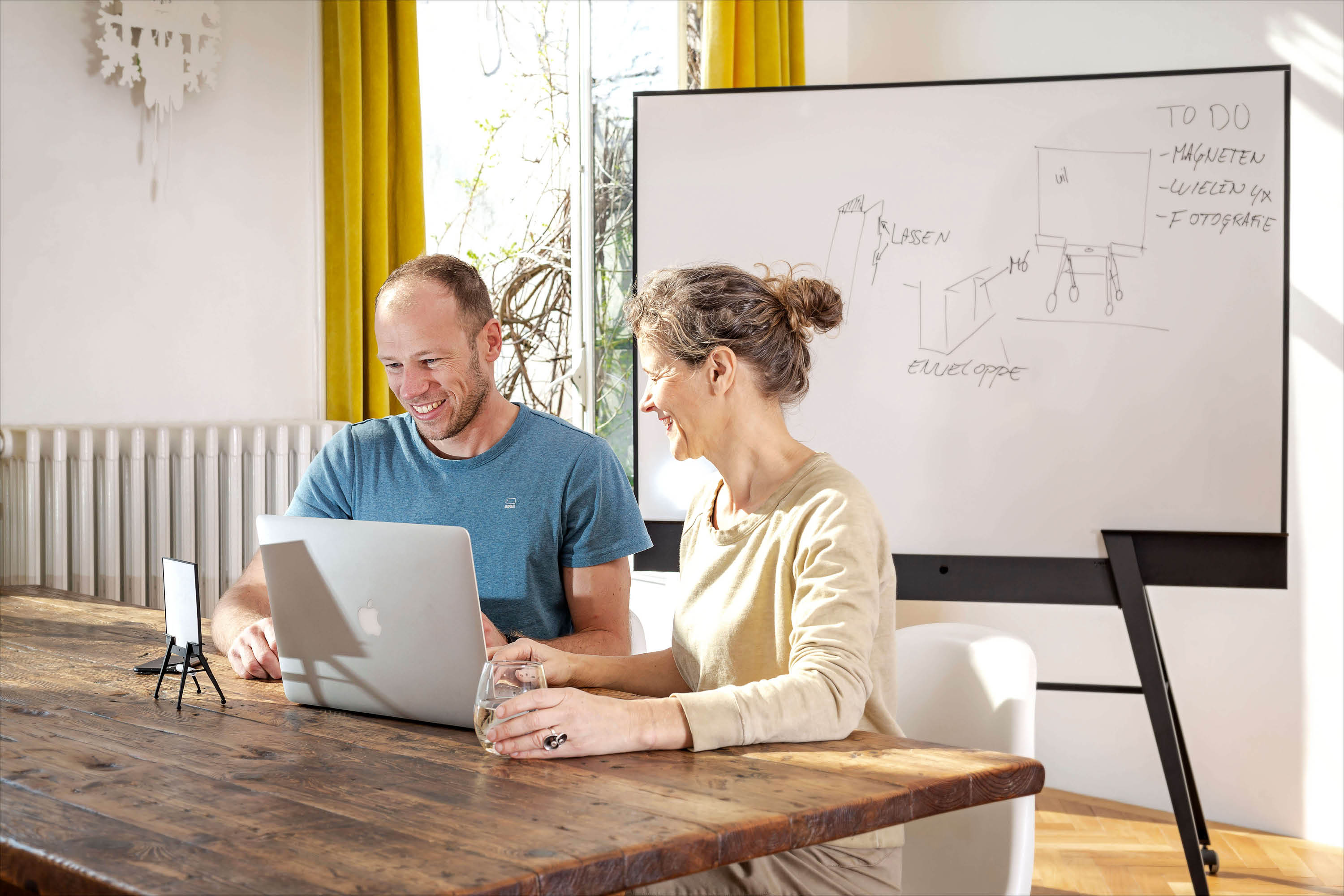
Choosing a new product that incorporates sustainability is a great way to go with a new project. The quirky and brilliant Leaf is an acoustic display board that features 100% recycled textile felt made out of old jeans. The portable flipchart and whiteboard Owl is 99% recyclable, and the acoustic desk screen Butterfly is made from 100% recycled PET plastic.

When looking to incorporate sustainability in the workplace, feel free to explore the wide range of sustainably made products featured in this article, or look at our gallery for further inspiration.

